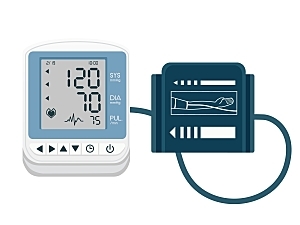Over the past five years, a team at Mass General Brigham has developed an algorithm-based cardiovascular risk management program that’s delivered remotely, with the goal of improving access to care. The researchers previously showed in Circulation that the program improved blood pressure and cholesterol levels in the first 5,000 patients enrolled.
Now, Mass General Brigham researchers have demonstrated the program is scalable at a population level and can meet the needs of diverse patient populations. Benjamin M. Scirica, MD, MPH, director of innovation in the Division of Cardiovascular Medicine at Brigham and Women’s Hospital and a senior investigator in the Thrombolysis and Myocardial Infarction (TIMI) Study Group, Alexander J. Blood, MD, MSc, a cardiologist at the Brigham and director of clinical operations for the remote health team, and colleagues report results on 10,803 patients in JAMA Cardiology.
Description of the Program
Patients were eligible for the medication management program if they were 26 to 80 years old, had blood pressure (BP) and/or LDL-C levels above guideline-recommended targets, and had at least one visit with a Mass General Brigham physician within the prior three calendar years. They were referred to the program via the electronic health record, and their physician was contacted to approve their inclusion.
Trained, nonlicensed navigators supervised by a team of advanced-practice pharmacists, nurse practitioners and physicians coordinated care, collected data and conveyed the clinical team’s dietary, lifestyle, and medication recommendations to each patient. They reminded patients to complete readings, obtain laboratory tests, and start a new therapy as prescribed by the clinical team.
Navigators used customer relationship management software, task automation, clinical decision support algorithms, and multi-channel communication to streamline patient communication and management.
Telephone calls were the predominant method of communication to improve access and ensure equitable inclusion regardless of digital literacy. Patients receiving hypertension management could choose between a Bluetooth- or cellular-enabled BP cuff. Home BP measurements and laboratory values were monitored daily to ensure safety and clinically appropriate management.
Methods
10,803 patients enrolled in the program between January 1, 2018, and July 1, 2021, including 3,658 in hypertension management and 8,103 in hyperlipidemia management. 56% were female, the mean age was 65, 12% identified as Black, 11% identified as Latinx, 72% identified as white, and 16% identified as being of another race, multiple races, or did not respond. 11% reported a preferred language other than English.
An additional 1,266 patients agreed to receive dietary, lifestyle, and medication advice but declined to participate in home BP monitoring or program medication titration. This “education-only cohort” served as a nonrandomized control group.
Persistence in the Program
At the time of data lock on December 1, 2021, patient status was:
- Had achieved their BP/LDL-C goal and entered the maintenance phase—41% of patients receiving hypertension management and 34% receiving hyperlipidemia management
- Were still active in the program—14% and 20%, respectively
- Had become unreachable—29% and 31%, respectively
- Had returned to the care of their primary care physician because of adherence issues or challenges in communication—8% and 5%, respectively
- Had dropped out of remote management—8% and 10%, respectively
Change in the Medication Management Cohort vs. Controls
Compared with patients in the education-only cohort, the medication management cohort had (P<0.001 for all comparisons):
- Significantly lower mean office-measured systolic/diastolic BP at six months (−1.5/−0.7 vs. −8.7/−3.8 mm Hg) and 12 months (+0.2/−1.9 vs. −9.7/−5.2 mm Hg), respectively
- Significantly greater mean LDL-C reduction at six months (−35.4 vs. −9.3 mg/dL) and 12 months (−37.5 vs. −10.2 mg/dL), respectively
Change Within the Medication Management Cohort
Among all patients who agreed to receive medication management, the change from baseline to program exit was (P<0.001 for all):
- Mean systolic BP—Reduced by 9.9 mm Hg
- Mean diastolic BP—Reduced by 6.0 mm Hg
- Mean LCL-C—Reduced by 46.2 mg/dL
Improvements were even greater among patients who completed the program and achieved the maintenance phase:
- Mean systolic BP—Reduced by 12.6 mm Hg
- Mean diastolic BP—Reduced by 7.1 mm Hg
- Mean LDL-C—Reduced from 140 to 70 mg/dL (50%), with 94% of patients achieving their goals
The effects of hypertension and hyperlipidemia management were similar regardless of race, ethnicity, and preferred language.
Opportunities for Improvement
The team tried to contact 200 randomly selected patients who became unreachable or dropped out. Of the approximately 30% who responded, many felt their condition was under control, preferred to work directly with their physician, were uncomfortable with additional medications, or stated the program was not convenient. This highlights areas for improvement in patient education and engagement.
